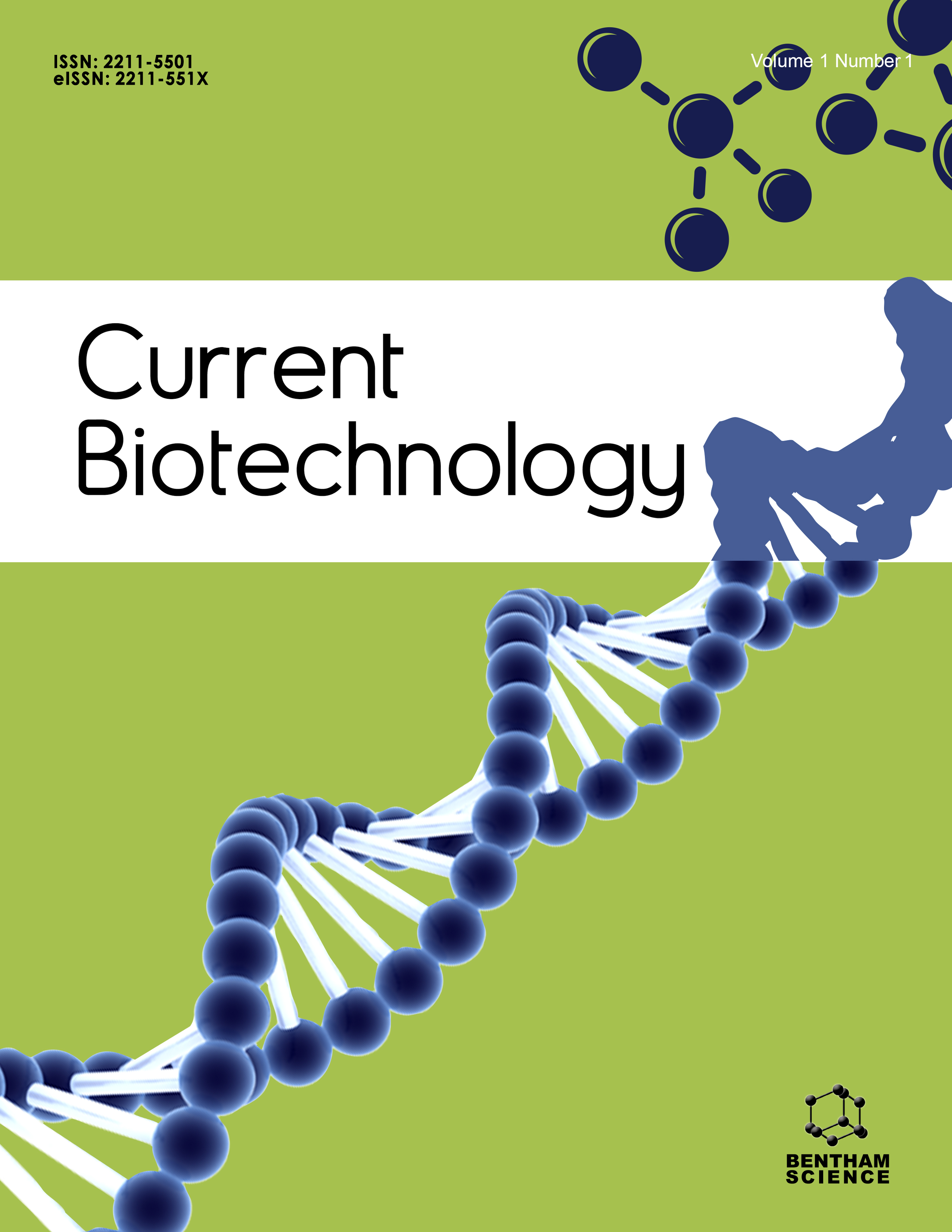- Home
- A-Z Publications
- Current Biotechnology
- Previous Issues
- Volume 7, Issue 2, 2018
Current Biotechnology - Volume 7, Issue 2, 2018
Volume 7, Issue 2, 2018
-
-
Plant-microbe Symbiosis as an Instrument for the Mobilization and Removal of Heavy Metals from Contaminated Soils - A Realistic Approach
More LessAuthors: Rhitu Kotoky and Piyush PandeyBackground: Contamination of soil with heavy metal is a major problem for developed and developing countries. Therefore, different approaches including bioremediation has been applied for remediation of metal contaminated sites. Biological approaches offer efficient and better way to remediate pollution in the air, soil and water. The plant-microbe interaction for remediation of polluted site is attracting interests and att Read More
-
-
-
A Review of Endophytic Fungi Bioprospecting in Africa - 1994 to 2014
More LessAuthors: Edson P. Sibanda, Musa Mabandla and Takafira MduluzaBackground: Despite the recognition that endophytic fungi are an important source of diverse and unique natural bioactive products, there are no reviews outlining how African researchers have been tapping into this bioresource. Objective: This review aims to consolidate and provide insights into the research on fungal endophytes in Africa during the period 1994-2014. Methods: A predefined search protocol was used to under Read More
-
-
-
Fungal Diversity and Dynamics During Bioremediation of Crude Oilpolluted Soil
More LessAuthors: Chioma B. Chikere and Chinedu Christopher ObiezeBackground: The design of microbial mediated remediation strategies for hydrocarbon polluted sites requires understanding of the microbial community structure pre and post contamination. This research is focused on investigating fungal community succession before and after crude oil contamination and nutrient amendment. Objective: To examine fungal community response to crude oil contamination, following biosti Read More
-
-
-
Techno-functional Properties of Bacterial Species Associated with Cassava Waste
More LessBackground: Proper understanding of the true microbial diversity of cassava waste (CW) and their technological significance is critical for efficient utilization of the waste for value addition. Objective: In this study, technologically relevant characteristics of bacterial species associated with cassava peel waste (CPW) and cassava wastewater (CWW) were investigated with a view to identifying their industrial potential. Method Read More
-
-
-
Nanobiocatalysis for the Synthesis of Pentyl Valerate in Organic Solvents: Characterization, Optimization and Reusability Studies
More LessAuthors: Vrutika Patel, Milind P. Deshpande, Ashok Pandey, Christian Larroche and Datta MadamwarBackground: Biotransformation and enzymatic methods of ester synthesis are more effective when performed in non-aqueous media. The aim of this work was to prepare reusable and more effective biocatalyst to catalyze the synthesis of pentyl valerate by esterification reaction. Method: Silane modified CdS nanoparticles were prepared and used for lipase immobilization. Characterization study was carried out using Infrar Read More
-
-
-
Structure-based Virtual Screening, Docking and Molecular Dynamics Simulation Studies on Human Telomerase Reverse Transcriptase (hTERT) Inhibitors
More LessAuthors: C. Shruthi Sureshan, Seethalakshmi Sakthivel and S.K.M. HabeebBackground: Telomerase is a reverse transcriptase that maintains the length of telomere in cells. Human telomerase reverse transcriptase (hTERT) is one of the two basic components of telomere, consists of four domains and is an important target for inhibiting cell proliferation in malignant tumours. Human telomerase reverse transcriptase consists of 1132 amino acids that form four different domains. Amino acid residue fr Read More
-
-
-
Development of an Enzymatic Cycling Method Using Pyruvate Kinase for Assaying Pyruvate or Phosphoenolpyruvate
More LessAuthors: Shigeru Ueda, Shin-ichi Sakasegawa and Haruyuki AtomiBackground: Enzyme cycling is a sensitive assay method that exploits amplification techniques. We recently developed a novel enzymatic cycling method, which utilizes both the forward and reverse reactions of creatine kinase (CK), for the quantitative determination of creatine. Objective: Our aim was to develop a novel enzymatic cycling method to measure pyruvate or phosphoenolpyruvate using pyruvate kinase (PK), which e Read More
-
-
-
Computational and Pathway Analysis of nsSNPs of MED23 Gene Involved in Human Congenital Diseases
More LessAuthors: Muhammad Naveed, Komal Imran and Ayesha MushtaqBackground: Mediator complex subunit 23 (MED23) is a transcriptional mediator of RNA polymerase II and essential for heat-shock-specific gene expression in humans. Mutations in MED23 gene cause neural diseases. Therefore, prior to a population study, it is important to uncover different deleterious single nucleotide polymorphisms (SNPs) structural and functional effects within MED23 encoded protein. Methods: The prese Read More
-
Most Read This Month
Article
content/journals/cbiot
Journal
10
5
false
en


